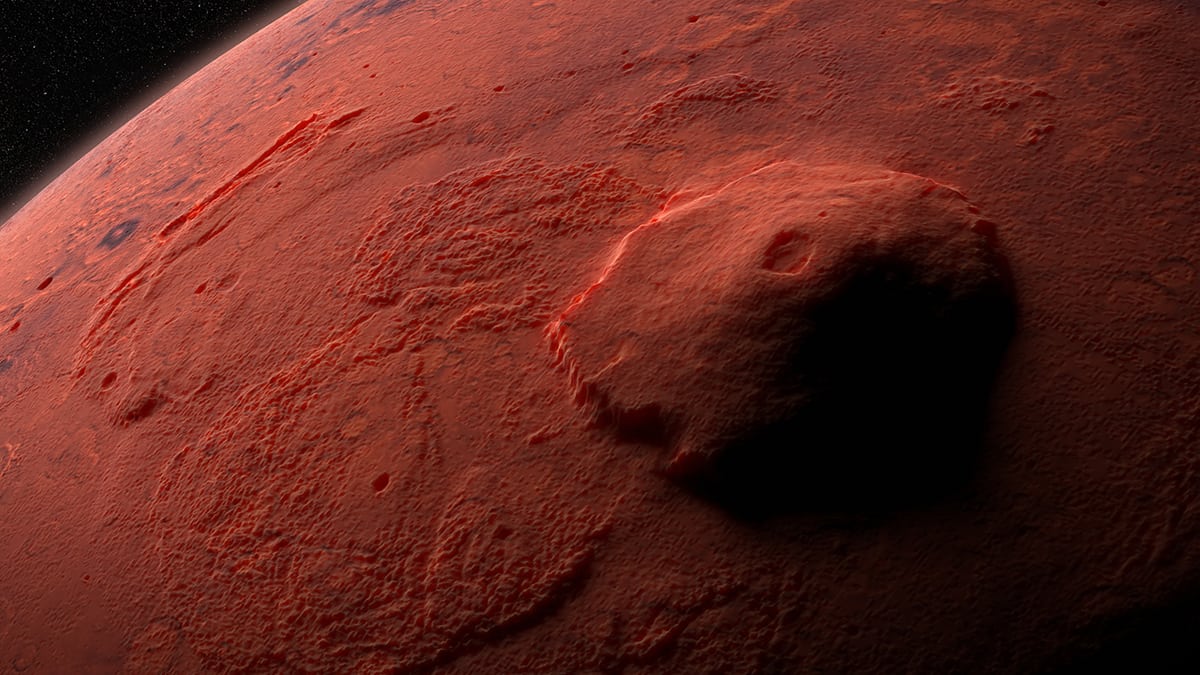Accurate scans in MarsThe Chinese spacecraft, piloted by the Zhurong spacecraft, has made a remarkable discovery: polygonal shapes buried beneath the surface of Utopia Planitia.
The spacecraft encountered these interesting structures while exploring the Red Planet using an advanced ground-penetrating radar system.
Chinese spacecraft reveals unprecedented structures on Mars
Polygonal shapes, ranging from centimeters to meters in diameter, form a puzzle Geology that now challenges scientists.
A total of 16 of these polygonal wedges have been identified, located approximately 1.2 km from the rover’s current point.
Surprisingly, they were buried at an average depth of 35 meters along the route taken by the Zurong River.
Since his arrival Mars On May 15, 2021, the spacecraft exceeded expectations for its initial three-month mission on Earth, extending its investigations for more than a year before entering a planned hibernation state in May 2022.
During this active period, Zhurong meticulously explored the surface of Mars, taking stunning images of the planet, studying its topography, and making important measurements with its ground-penetrating radar, with a special focus on Utopia Planitia.
A model of the appearance of polygonal shapes buried on the surface of Mars. – Image: Zhang et al./reproduction
The data collected by the rover was carefully analyzed by Researchers From the Institute of Geology and Geophysics of the Chinese Academy of Sciences.
According to Li Zhang and his team, responsible for a new article published in the magazine natureThe polygonal shapes date back to a period between 3.7 and 2.9 billion years ago, marking the end of the Hesperian period and the beginning of the Amazons on Mars.
This revolutionary discovery is notable for being the first time a buried polygonal terrain has been identified.
It is believed that its formation may be related to the processes of freezing and thawing of water in Utopia Planitia, indicating the presence of a cold environment during its creation.
The underlying moisture to form these structures can have diverse origins, from a potential underground aquifer to the deposition of glacial pores due to snowfall or vapor diffusion.
As water dissipated from the sediments over time, the soil contracted, forming characteristic cracks in the clay.
There is another interesting hypothesis suggesting a possible origin volcanic for these structures. It is possible that thermal contraction resulting from cooling of the lava created similar fissures.
Regardless of the explanation, the discovery of these buried polygons highlights a startling climate change on Mars, leaving scientists eager to uncover more of the secrets the red planet has to offer.

“Incurable thinker. Food aficionado. Subtly charming alcohol scholar. Pop culture advocate.”







More Stories
NASA Releases Selfie of Perseverance Rover Working on Mars
NVIDIA driver includes hidden Final Fantasy XVI profile
PlayStation Plus Extra and Premium saw a significant drop in players in July